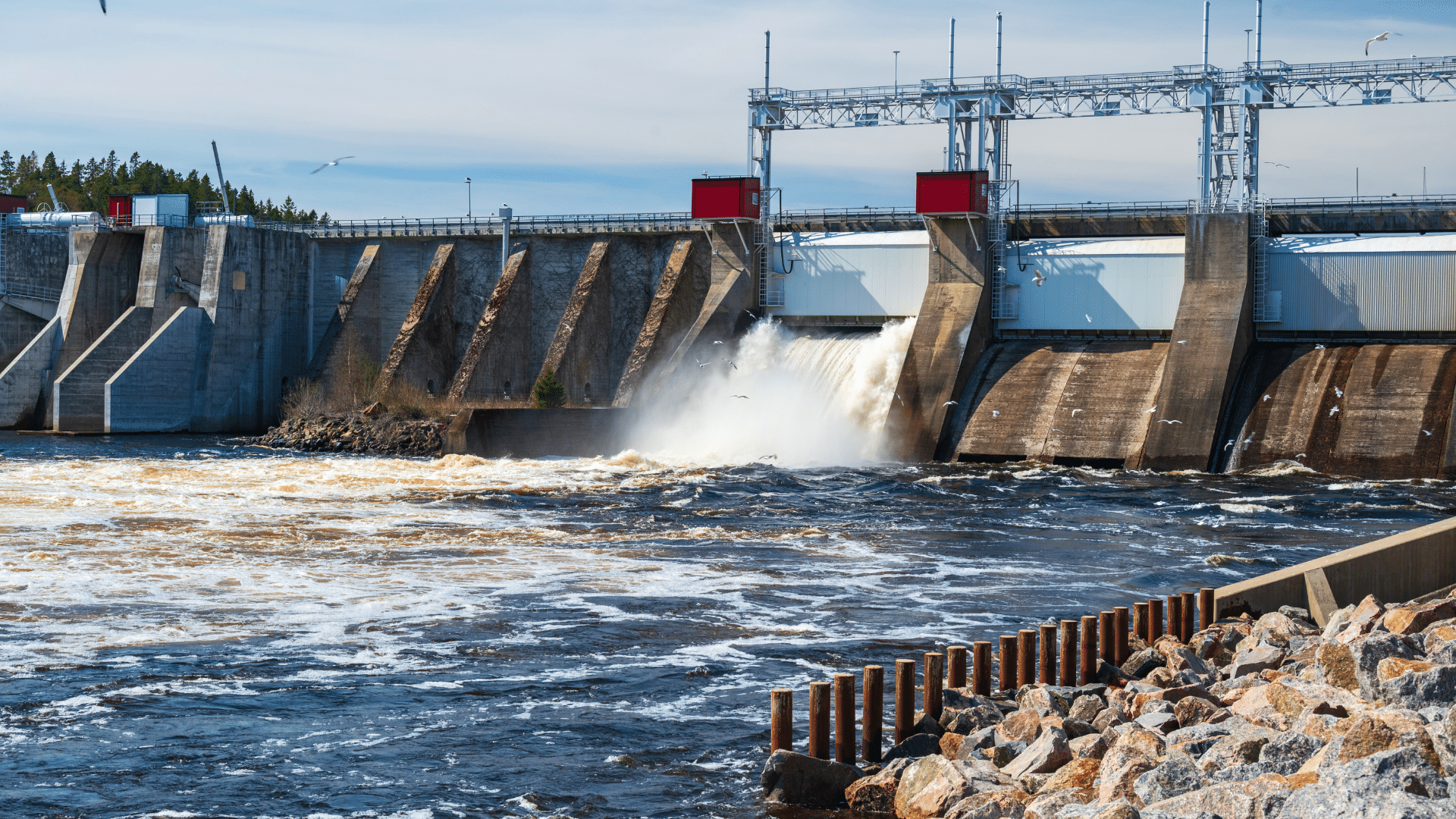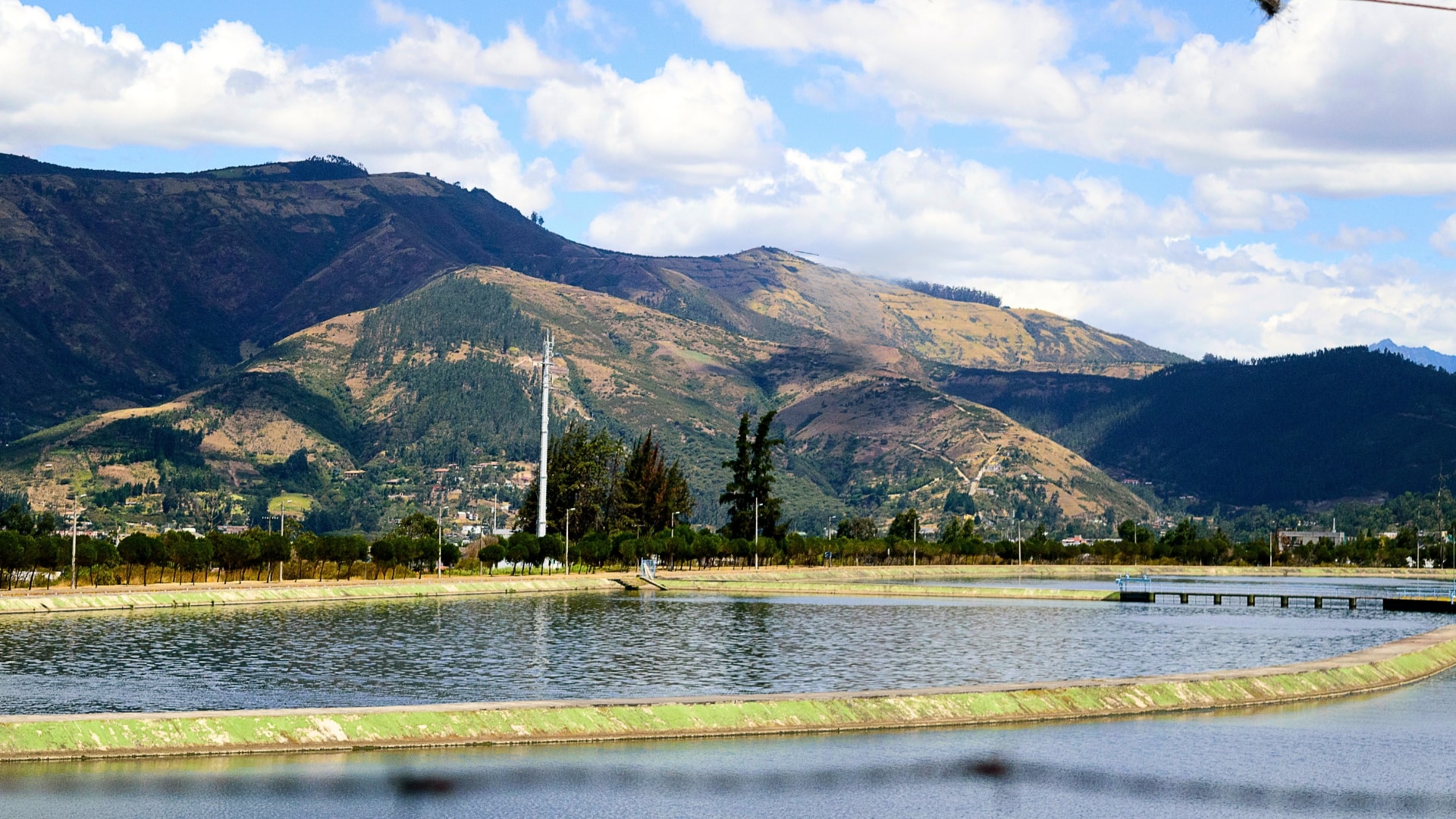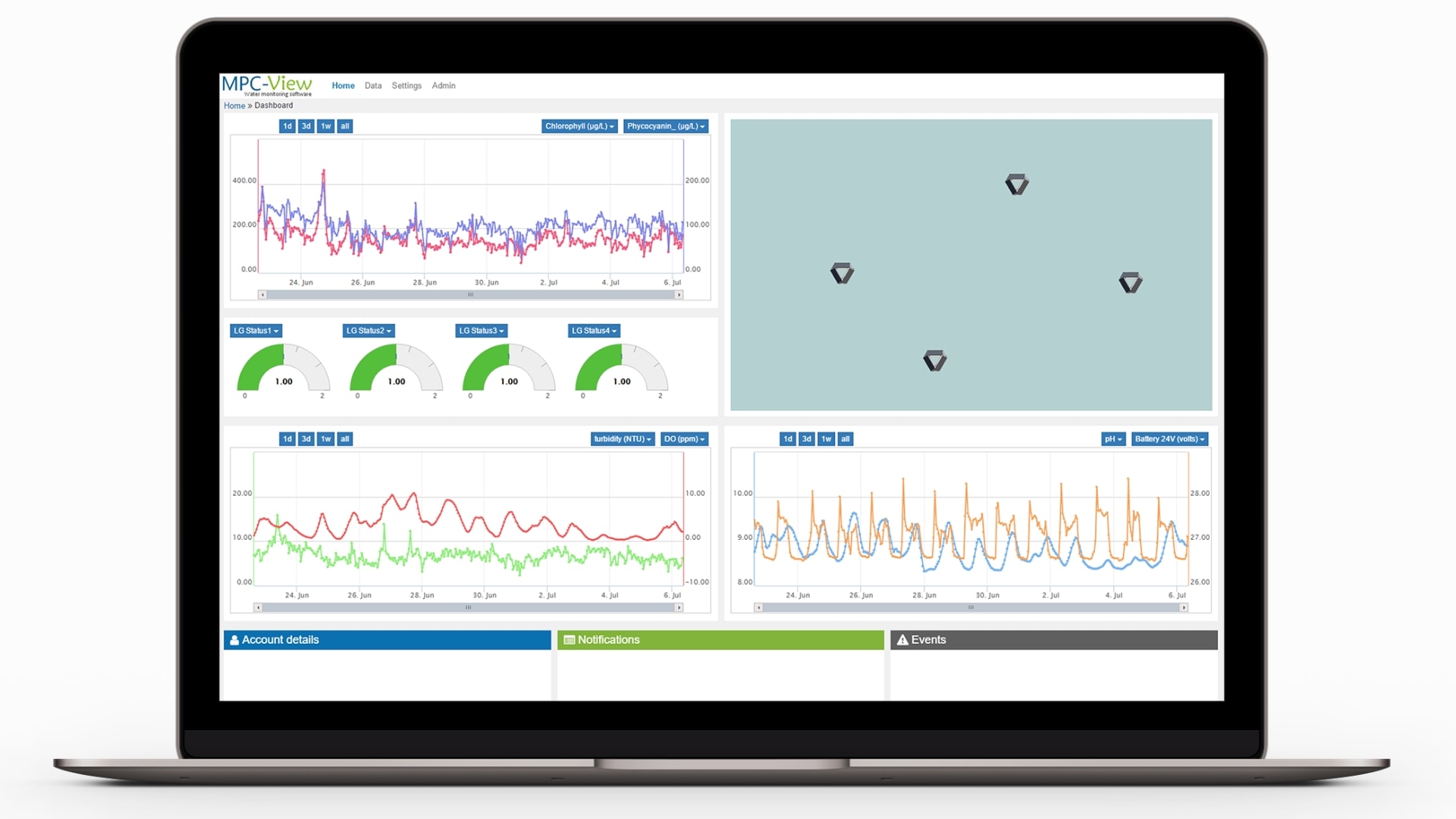What is the Biggest Cause of Algal Blooms Today?
Climate change and nutrient loading from agricultural run-off and urbanization led by human activities are anticipated to intensify the frequency and severity of harmful algal blooms. With warmer temperatures and increased nutrient availability, utilities should prepare for more frequent and widespread occurrences of toxic phytoplankton, especially dinoflagellates known to produce harmful toxins. According to research,
- Toxic cyanobacteria events were most common in the summer (46%) and spring (27%).
- However, some utilities reported cyanobacterial bloom events in the fall (19%) and winter seasons (9%).
Blue-green algae are significant ecological phenomena that can dramatically alter aquatic ecosystems and impact human activities. Toxic cyanobacteria are typically characterized by the rapid growth of algae in water bodies, leading to lush green or blue-green waters often referred to as “pea soup.” But what’s behind the alarming increase in the frequency and intensity of algal blooms observed globally?
The primary driver of modern algal blooms can be traced back to nutrient pollution, particularly the excess availability of nitrogen and phosphorus in our waterways. According to research, the benefit of understanding these patterns is crucial for timely intervention and management.
How are Predictions of Algal Blooms Used?
Predictions of algal blooms help in timely monitoring and management of water bodies, allowing authorities to implement preventive measures to protect aquatic ecosystems. These predictions assist in safeguarding human health by providing advance warnings about potential toxins in drinking water and recreational areas.
Harmful algae forecasts provide numerous benefits, including supporting fisheries and aquaculture industries by minimizing the economic impacts associated with fish kills and habitat degradation. Utilizing predictions can guide resource allocation for research, funding, and community education efforts aimed at reducing nutrient pollution and improving water quality parameters.
Regulations and the Need for Modernized Water Utility
Water management is entering a new era, driven by rapid technological advancements and increasing environmental pressures. Water utilities provide an essential service by ensuring the availability of clean drinking water to communities. Utilities worldwide must navigate a landscape of rising demand, aging infrastructure, and stricter regulations. The need for innovative and sustainable water solutions has never been greater. As 2025 approaches, forward-thinking utilities are embracing smart technologies, real-time monitoring, and nature-based solutions to enhance water quality, efficiency, and resilience, reaping significant benefits in the process.
– Artificial Intelligence in Water Management
Artificial intelligence (AI) is revolutionizing the water management industry by enabling utilities to make data-driven decisions and optimize their operations. AI-powered systems can analyze vast datasets to predict water demand, detect leaks, and identify inefficiencies. For example, AI-powered sensors can monitor changes in water quality and alert utilities to potential issues before they escalate into major problems. Moreover, AI can help optimize treatment processes, reducing energy consumption and operational costs. By harnessing the power of AI, utilities can enhance their ability to provide a consistent supply of safe drinking water, ultimately benefiting both the environment and the communities they serve.
– Climate Change
Climate change is significantly impacting the water industry, with rising temperatures and changing precipitation patterns affecting water availability and quality. Utilities are responding to these challenges by implementing measures such as water conservation programs, drought management plans, and climate-resilient infrastructure. For instance, water conservation programs can help reduce water demand, while drought management plans enable utilities to prepare for and respond to droughts effectively. Additionally, climate-resilient infrastructure helps utilities adapt to changing weather patterns, reducing the risk of flooding and other extreme weather events. By adopting these strategies, utilities can enhance their resilience to climate change and ensure a sustainable water supply for the future.
– Smart Water Technologies Driving Operational Efficiency
Digital transformation is revolutionising water management. In 2025, the adoption of smart water technologies is expected to increase significantly, with utilities putting money towards artificial intelligence, IoT-enabled sensors, and predictive analytics to enhance efficiency, data-security and numerous other benefits.
Smart water systems provide real-time insights into water quality, leak detection, and distribution networks to industries. Advanced AI algorithms can predict equipment failures, reducing operational downtime and maintenance costs. Utilities investing in these digital tools will gain a competitive edge in sustainability and cost savings. Digital tools also help utilities respond faster to contamination events, ensuring safer drinking water for communities. By improving resource allocation and reducing water loss, these innovations contribute to a more reliable and resilient water supply system. Effective communications are crucial for utilities to inform stakeholders about the implementation and advantages of these smart technologies.
MPC-view by LG Sonic provides live data on water parameters to it’s customers.
– Stricter Regulations and the Shift Toward Chemical-Free Treatment
Governments worldwide are tightening water quality regulations, particularly regarding chemical use in treatment processes. Traditional chemical-based methods for algae control and disinfection are facing increased scrutiny due to their long-term ecological impact.
In response, utilities and industries are transitioning to sustainable alternatives such as ultrasound technology, which effectively controls toxic blooms without the need for chemicals. These regulatory shifts emphasize the importance of adopting environmentally friendly and compliant water treatment strategies, which offer significant benefits for both the environment and public health. A recent study on water utility regulatory models highlights how evolving regulations are shaping sustainable water management practices. The study provides insights into how utilities must adapt their strategies to align with stricter environmental policies and technological advancements in water treatment.
Similarly, another article examines how utilities can implement cost-effective and energy-efficient solutions to meet sustainability goals while ensuring water quality and availability. Additionally, another study provides a comprehensive analysis of the elimination of emerging contaminants (ECs) using biological, chemical, and hybrid techniques in wastewater treatment plants (WWTPs).
– Public Awareness and Demand for Transparency
Consumers are more informed than ever about the quality of their water supply and the environmental consequences of outdated treatment methods. With growing concerns over contaminants, water scarcity, and the sustainability of treatment processes, the demand for greater transparency and accountability from water utilities has never been higher. Transparency in water management is no longer optional; it is an expectation that plays a crucial role in maintaining public trust and regulatory compliance.
To meet these expectations, utilities must enhance communications with stakeholders by providing clear, accessible water quality data and demonstrating measurable efforts toward sustainable practices. Public awareness campaigns, interactive data dashboards, and educational initiatives can help bridge the gap between utilities and the communities they serve, fostering a sense of shared responsibility for water conservation and management.
As consumer expectations evolve, utilities that prioritize openness, responsiveness, and technological innovation will be best positioned to build long-term trust and credibility. This shift toward greater transparency will ultimately contribute to a more sustainable, efficient, and community-focused approach to water management.
Drinking Water & Municipalities
Municipalities face increasing challenges in providing safe, high-quality drinking water while complying with evolving regulatory frameworks. The growing presence of emerging contaminants (ECs), including pharmaceuticals, endocrine-disrupting chemicals (EDCs), and microplastics, poses significant risks to public health. Traditional water treatment methods, such as chlorine disinfection and sedimentation, are proving insufficient in fully addressing these contaminants.
Additionally, integrating real-time water quality monitoring is very important as it allows municipalities to detect and respond to contamination events more efficiently, ensuring public safety. Water infrastructure investment is also a critical concern. Many municipalities are dealing with aging water distribution systems, which contribute to water loss and contamination risks. Smart water management solutions, such as AI-driven leak detection and predictive maintenance, are helping municipalities optimize infrastructure performance and reduce operational costs.
Moreover, municipal water utilities are increasingly exploring alternative water sources, including water reuse and desalination, to address water scarcity concerns. Water reuse strategies, particularly those incorporating advanced purification techniques, are gaining traction as sustainable solutions for augmenting drinking water supplies in water-stressed regions.
As the regulatory landscape tightens, municipalities must adopt comprehensive water management plans that incorporate both technological advancements and policy-driven conservation efforts. Ensuring access to clean, safe drinking water will require a fast approach that balances innovation, sustainability, and compliance with emerging water quality standards.
Future of Sustainable Water Reuse Solutions
Utilities that embrace smart water management, chemical-free treatment, and nature-based solutions will be better equipped to meet the evolving challenges of water scarcity, regulatory compliance, and consumer expectations, reaping significant benefits in the process.
Integrating innovative water treatment solutions with energy-conscious procurement models will ensure a future of sustainable and resilient water management. Water utilities provide an essential service by ensuring the availability of clean drinking water to communities. A report by the International Water Association highlights how advancements in digital water technology, real-time monitoring, and energy-efficient treatment methods are transforming the sector. These innovations help utilities optimize resource allocation, reduce operational costs, and enhance sustainability, reinforcing the shift toward a smarter and more adaptive water management framework.
Conclusion
Ensuring sustainable water management in the face of growing environmental and regulatory challenges requires a proactive, technology-driven approach that offers numerous benefits. The increasing prevalence of algal blooms, emerging contaminants, and water scarcity addresses the urgency for utilities to adopt smarter solutions that prioritize prevention, efficiency, and resilience.
Water utilities provide an essential service by ensuring the availability of clean drinking water to communities. By adopting real-time monitoring, AI-powered analytics, and environment-friendly treatment methods, water utilities can move beyond reactive strategies and build a future-ready infrastructure. Investing in research, policy collaboration, and sustainable technologies will not only safeguard public health but also enhance the long-term sustainability of our water resources. To meet these challenges, utilities must move beyond traditional water management methods and embrace a more integrated, data-driven approach. By adopting real-time monitoring, AI-powered analytics, and environment-friendly treatment methods, water utilities can monitor environmental impact. These technologies not only improve operational efficiency but also help reduce waste, energy consumption, and long-term costs; making water management more sustainable and economically viable.
However, technology alone is not enough. Achieving sustainable water management requires a collective effort that includes investment in research, stronger policy collaboration, and an ongoing commitment to community engagement. Policymakers, scientists, and industry leaders must work together to establish regulatory frameworks that encourage innovation while ensuring compliance with the highest safety and environmental standards. Additionally, educating the public about water conservation and pollution prevention is essential to building a culture of shared responsibility, where individuals, businesses, and governments all contribute to preserving this vital resource.


